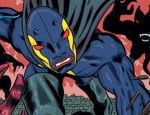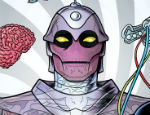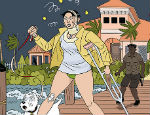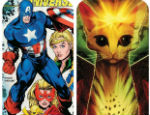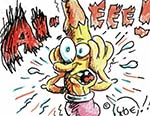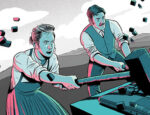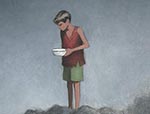Something is rotting in the House of Usher, and it might just be the story.
A lone traveler makes a journey through thick woods and into a thicker fog that surrounds the mysterious House of Usher, where he finds coffins and their inhabitants unearthed and ready to greet him. As if that wasn’t strange enough of a welcoming party, this lone traveler comes face to face with Roderick Usher, an eccentric artiste plying his talents to a painting of his beloved sister Madeline. But to what ends will Usher go to master his talents and perhaps preserve his sister’s beauty in oil and agelessness?
Richard Corben’s bizarre adaptation of Edgar Allan Poe’s classic tale of terror and suspense leaves much to be desired by way of story. Granted, I haven’t read the original short story in quite a few years, but I don’t recall Roderick Usher being an artist painting a portrait of his twin sister. It also seems that Corben has taken some liberties to modernize the tale in some senses. Usher, for instance, has an uncanny resemblance to Andy Warhol, with long straight blond hair and eccentric glasses. It’s hard to tell what time period this story is set in, as well; Allan, Corben’s named narrator, seems like a relic from another time while Usher comes across as strangely post-modern and hip.
Corben’s artwork is really the only element of Fall of the House of Usher that kept me turning the pages. I remember I had a similar feeling when I read Ragemoor; I was in it for Corben’s artwork, not Strnad’s writing, which, like Fall of the House of Usher, moves too quickly for the necessary character development to make the reader care about any of these individuals. There’s really no substance, whereas the original Edgar Allan Poe tale had equal parts of story and scare factor, which is why adaptations seldom beat out the originals.
Richard Corben (W & A) • Dark Horse Comics, $3.99, May 15, 2013.





